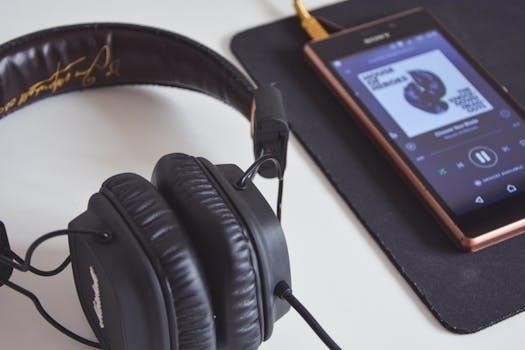Suburban SW10DE Manual Overview
This section provides an overview of the Suburban SW10DE water heater manuals. These manuals include vital instructions for installation, operation, and maintenance. Available manuals cover service, training, and general usage. Access them for safe and efficient operation of your unit.
Available Manual Types
The Suburban SW10DE water heater is supported by several types of manuals, each serving a specific purpose. These include the Installation and Operation Manual, which guides users through the correct setup and daily usage of the unit. A Service Manual is also available, designed for qualified technicians to perform repairs and maintenance. In addition to these, a Service Training Manual is provided for those who need to learn in-depth servicing procedures. These manuals are crucial for ensuring the safe and efficient operation and proper upkeep of the SW10DE. Having the correct manual is essential for troubleshooting and maintaining the longevity of the water heater. Finally, note that there are different manuals for different versions, so be sure to use the correct one.
Installation and Operation Manual
The Installation and Operation Manual for the Suburban SW10DE is a critical resource for anyone setting up or using this water heater. This manual provides step-by-step instructions for the correct installation of the unit, ensuring it is mounted securely and connected properly to the gas and electrical systems. It also details the operational procedures, outlining how to use both the gas and electric modes safely and effectively. The manual includes important safety precautions that must be followed to prevent injury or damage. Users should always consult this manual before attempting any installation or operation tasks. Furthermore, it contains information about the direct spark ignition system and the initial setup process of the SW10DE. This comprehensive guide ensures safe and efficient use.
Service Manual
The Service Manual for the Suburban SW10DE water heater is designed for qualified service technicians. It offers in-depth technical information needed for diagnosing and repairing the unit. This manual contains detailed troubleshooting procedures for various issues that may arise. It provides specific instructions for dismantling and reassembling components of the water heater. The manual also includes diagrams and schematics to aid in understanding the internal workings of the SW10DE. Furthermore, it specifies the correct parts and procedures for repairs. This manual is essential for ensuring the longevity and proper function of the SW10DE. Technicians should always refer to this manual when performing maintenance or repairs. It is crucial for safe and effective servicing.
Service Training Manual
The Service Training Manual for the Suburban SW10DE is a resource for technicians learning to service this specific water heater model. This manual provides comprehensive instructions for understanding the unit’s operation and maintenance. It includes step-by-step guidance for diagnosing common issues and performing necessary repairs. The manual also covers safety precautions and best practices for handling the water heater. Furthermore, it offers valuable insights into the specific features and technologies of the SW10DE, such as the Direct Spark Ignition system. This training manual is vital for ensuring technicians are well-equipped to provide reliable and effective service for this unit. It ensures that all servicing is done safely and correctly, maintaining the integrity of the system.
SW10DE Key Features
The SW10DE boasts a Direct Spark Ignition system for easy start-up, a 10-gallon tank for ample hot water, and the capability for both gas and electric operation; This enhances versatility.
Direct Spark Ignition (DSI) System
The Suburban SW10DE water heater utilizes a Direct Spark Ignition (DSI) system, a key feature for reliable and convenient operation. This system eliminates the need for a pilot light, enhancing safety and efficiency. The DSI system initiates the gas burner through an electronic spark, simplifying the start-up process. This ignition mechanism is designed to be robust and dependable, ensuring the water heater operates smoothly in various conditions. It also reduces the risk of gas leaks associated with traditional pilot lights. The DSI system is a significant advantage for users seeking a hassle-free and modern water heating solution. The direct spark ignition contributes to the overall ease of use, making the SW10DE a user-friendly option for recreational vehicles and mobile housing. This feature is also detailed in the installation and operation manuals, providing users with comprehensive information on its functionality and maintenance. The electronic system is designed for longevity and minimal maintenance, making it a convenient feature.
10-Gallon Tank Capacity
The Suburban SW10DE water heater features a 10-gallon tank capacity, designed to provide an ample supply of hot water for various needs in recreational vehicles and mobile housing. This capacity is ideal for showers, sinks, and other appliances, ensuring a comfortable experience. The 10-gallon tank is crafted to maximize space efficiency while delivering sufficient hot water for typical usage scenarios. This tank size is a balance between capacity and the physical dimensions of the unit, making it suitable for installation in limited spaces. The design of the tank allows for consistent hot water delivery, optimizing performance. The 10-gallon capacity is a key consideration for users looking for a reliable hot water solution without occupying excessive space. Understanding the tank size is important for planning usage and maintenance. The manuals provide detailed information about the tank, including its specifications and recommendations for care. The capacity is carefully chosen to meet the common requirements of mobile living.
Gas and Electric Operation
The Suburban SW10DE water heater offers the flexibility of both gas and electric operation, making it a versatile option for users. The gas mode utilizes direct spark ignition (DSI) for efficient and reliable heating when propane is available. Conversely, the electric mode is ideal when shore power is accessible, allowing for hot water without consuming gas resources. This dual-mode capability provides users with the convenience of choosing the most suitable option based on their location and available resources. The integration of both gas and electric heating systems ensures that hot water is readily available, regardless of the campsite. The selection between gas and electric operation also affects the operational efficiency and cost, making it a critical feature to understand for best results. The manuals provide clear instructions on how to switch between these modes and optimize their usage. The combination of gas and electric options enhances the user experience, ensuring a steady supply of hot water.
Troubleshooting Common Issues
This section addresses common problems with the SW10DE. These issues include electric mode failure and module board mounting. Proper troubleshooting ensures safe and effective operation. Consult the manuals for detailed solutions.
Electric Mode Not Working
If your Suburban SW10DE water heater’s electric mode is not functioning, several factors could be responsible. Begin by verifying the circuit breakers and on/off switch to ensure power is reaching the unit. A lack of power to the heating element often indicates an electrical issue. Check wiring connections for any loose or damaged wires. The thermostat and limit switch should also be inspected. It’s crucial to consult the wiring schematics in the service manual for accurate diagnostics. If these steps don’t resolve the problem, a faulty heating element or module board may be the cause. A methodical approach, following the manual’s guidance, is essential for safe and effective troubleshooting. Always ensure the power is off before performing any electrical checks. If unsure, seek professional assistance from a qualified technician.
Module Board Mounting
The module board on Suburban SW10DE water heaters is not pre-mounted at the factory; it is the installer’s responsibility to secure it. This board must be permanently mounted in an accessible location for servicing, but also kept out of reach of children and away from potential damage. The mounting location should protect it from excessive heat, moisture, and physical impact. It should not be exposed to the elements. Refer to the installation manual for recommended locations and mounting procedures. Ensure that all wiring connections are securely attached to the module board after mounting. Incorrect mounting can lead to damage or malfunction of the unit. Proper mounting is critical for safe and reliable operation of your water heater. Always use the correct screws and hardware when securing the board.
Maintenance and Repair
This section covers essential maintenance and repair information for the SW10DE. It includes details on tune-up kits and wiring schematics. Proper maintenance ensures the longevity and efficient operation of your unit. Refer to this section for guidance.
Tune-Up Kit Information
The Suburban SW10DE tune-up kit is specifically designed for models with serial numbers greater than 953601021. This kit typically includes essential components needed for routine maintenance, such as a 120VAC element and thermostat. Using the correct kit ensures that your water heater operates efficiently and safely. It is crucial to verify your unit’s serial number before purchasing this kit to ensure compatibility. Regular tune-ups with this kit can extend the life of your water heater and prevent potential issues. Always follow the manufacturer’s instructions when performing maintenance or installing new parts. The kit is essential for keeping your SW10DE in optimal working order. This will ensure safe and reliable hot water.
Wiring Schematics
Wiring schematics for the Suburban SW10DE are essential for troubleshooting and repair, especially when dealing with electrical issues like the electric mode not functioning. These diagrams provide a detailed layout of the electrical connections, including the heating element, thermostat, and control board. If you are experiencing a lack of power to the heating element, consulting the schematic will assist in pinpointing potential faults. Proper understanding of the wiring is crucial for safe and effective repairs; This will prevent any dangerous situations. Technicians and users should ensure they have the correct schematic for their specific model to avoid miswiring. The schematic will also help you to follow the correct installation procedure. Always disconnect power before working on any electrical components.


































